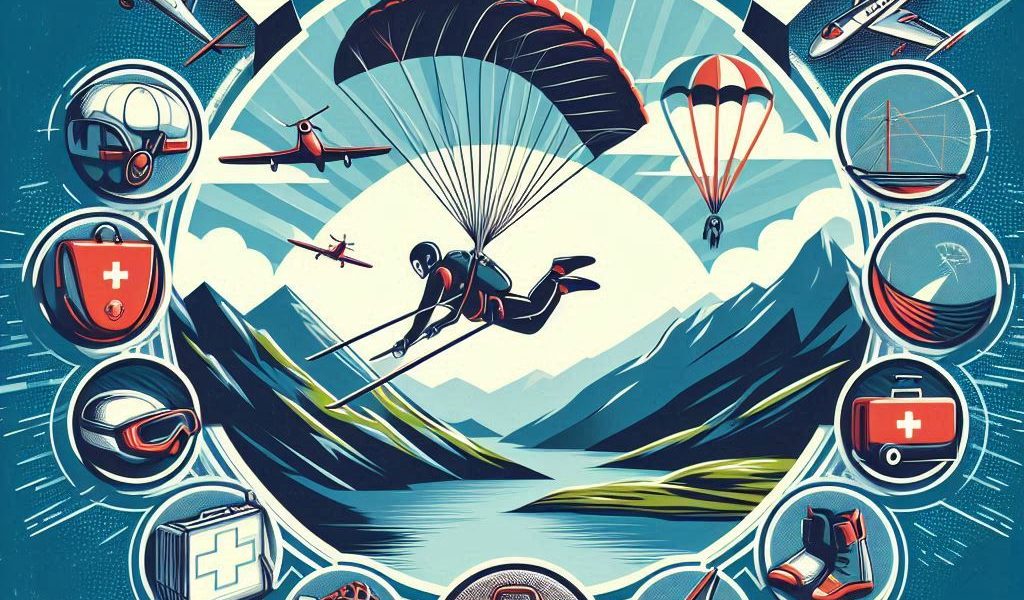Adventure sports are an exciting way to explore the world, but they come with inherent risks. Whether you’re bungee jumping in New Zealand, surfing in Hawaii, or hiking in the Swiss Alps, these activities can lead to unexpected injuries or accidents. That’s where travel insurance comes in. But when it comes to adventure sports, is your standard travel insurance enough, or do you need additional coverage?
In this blog, we’ll break down the key things you need to know about adventure sports and travel insurance, including why it’s essential, what’s typically covered, and how to ensure you’re fully protected before embarking on your next adventure.
Why You Need Travel Insurance for Adventure Sports
Adventure sports often involve higher levels of risk compared to regular activities like sightseeing or lounging by the pool. While standard travel insurance may cover you for common travel-related mishaps, such as flight cancellations or lost luggage, it may not extend coverage to accidents or injuries that occur during high-risk activities. That’s why you need specialized adventure sports coverage.
Here’s why having travel insurance for adventure sports is essential:
- Risk of Injury:
- Adventure sports like rock climbing, scuba diving, skiing, and skydiving involve physical exertion, sometimes in challenging or remote locations. The risk of injury—whether from a fall, equipment malfunction, or environmental factor—is higher in these sports, making it important to have coverage that specifically protects you in these situations.
- Medical Emergencies:
- If you sustain an injury while participating in an adventure sport, medical treatment abroad can be expensive. Without the right insurance, you could be left with hefty medical bills. Travel insurance for adventure sports covers emergency medical expenses, including hospitalization, surgery, and emergency evacuation if needed.
- Trip Cancellation or Interruption:
- If an injury or accident occurs during an adventure sport, you may need to cancel or cut short your trip. Adventure sports coverage helps reimburse you for non-refundable trip costs if you have to cancel or interrupt your vacation due to injury.
- Peace of Mind:
- Knowing you have the right insurance gives you peace of mind, allowing you to enjoy your adventurous activities without worrying about the potential risks. It’s not just about covering injuries; it’s about enjoying your trip fully and safely.
What Adventure Sports Are Covered Under Travel Insurance?
Not all adventure sports are covered under every travel insurance policy. Standard policies usually cover mild activities such as hiking, cycling, or swimming, but more extreme sports typically require additional coverage or an upgrade. Some of the adventure sports that may require specialized coverage include:
- Extreme Sports: Skydiving, bungee jumping, paragliding, and base jumping
- Winter Sports: Skiing, snowboarding, snowmobiling, and ice climbing
- Water Sports: Scuba diving, surfing, kite surfing, and wakeboarding
- Mountaineering & Rock Climbing
- Motor Sports: Dirt biking, motocross, and racing
If you plan on participating in any of these activities, you need to make sure your policy covers them explicitly. If your existing travel insurance doesn’t cover extreme sports, you might need to purchase an add-on policy or an adventure sports insurance rider.
What Does Travel Insurance for Adventure Sports Cover?
Travel insurance for adventure sports typically includes a combination of coverage for medical emergencies, accidents, and other related events. Here’s what you should expect:
- Emergency Medical Expenses:
- This includes coverage for hospitalization, medical treatment, and surgeries required due to injuries sustained during an adventure sport activity. It also covers doctor visits, prescription medications, and other necessary care while traveling.
- Emergency Evacuation and Repatriation:
- In case of a severe injury or accident, emergency evacuation coverage will transport you to the nearest medical facility. If necessary, this can also include repatriation to your home country, which can be extremely expensive without proper coverage.
- Trip Cancellation or Interruption:
- If you’re unable to continue your trip due to an injury while participating in an adventure sport, this coverage reimburses you for any prepaid travel expenses that are non-refundable. It can also help cover the cost of rescheduling your trip or replacing canceled activities.
- Personal Liability:
- If you’re involved in an accident during an adventure sport that causes injury or property damage to another person, personal liability coverage protects you from the financial costs of legal or medical claims made against you.
- Loss or Damage of Sports Equipment:
- If your sports equipment (like skis, climbing gear, or a diving suit) is lost, stolen, or damaged during your trip, this coverage helps reimburse you for repairs or replacements.
- Search and Rescue:
- If you get lost or need assistance during an adventure sport activity, search and rescue coverage can help cover the cost of recovery or rescue operations.
How to Get the Right Travel Insurance for Adventure Sports
- Check Your Current Coverage:
- If you already have travel insurance, review the terms to check if it includes adventure sports. Many basic plans don’t cover high-risk activities, so make sure to confirm whether your policy provides the necessary coverage.
- Look for Specialized Adventure Sports Coverage:
- Seek out travel insurance providers that offer policies specifically tailored for adventure sports. These policies may include enhanced coverage for activities like scuba diving, skiing, or skydiving.
- Consider the Risk Level of Your Activities:
- The more extreme the sport, the more likely it will require additional coverage. For example, skiing and snowboarding typically come with higher premiums due to the risk involved, so make sure to tailor your policy to your planned activities.
- Read the Fine Print:
- Ensure you understand the exclusions and limitations of your policy. Some policies may exclude certain high-risk sports or limit coverage based on where the activity takes place (e.g., outside of a certain altitude range for mountain climbing).
- Add Optional Extras:
- If necessary, you can purchase extra coverage for specific sports or conditions, such as extreme sports or high-altitude activities.
Final Thoughts
Adventure sports can make your travels unforgettable, but they also come with a certain level of risk. Travel insurance designed for adventure sports is essential for covering injuries, accidents, and other unexpected situations that may arise during your thrilling activities. Always ensure you have the right coverage to enjoy your adventures without the worry of the unexpected.
Are you planning an adventure-filled vacation? Get in touch with us to find the best travel insurance plan for your trip and ensure your next adventure is protected from the risks.




